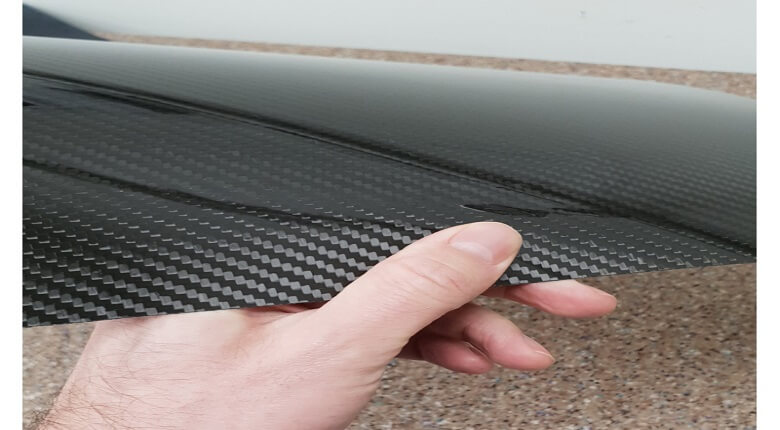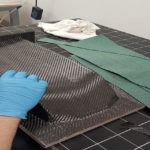- October 5, 2022
- No Comment
- 312
Difference Between Carbon Fiber and Kevlar Material

There’s been an interesting history of the confusion between carbon fiber sheets and Kevlar material. While both of them have showcased various benefits for the users, it is important to have a good understanding of both of these materials before you make the final choice of using one from them. This is why we bring to you this detailed article where we’re going to discuss the similarities and differences between Carbon Fiber and Kevlar. Additionally, we’ll also have a look at how carbon fiber panels and Kevlar products are made with some common and useful benefits of each. So let’s start the discussion.
What is Carbon Fiber?
This is not a new name to the global population and you must have also heard about this material once in a lifetime. After all, it is commonly used for things around us like your car may have wheels and rims, and interior finishes made out of this amazing material. Carbon fiber panels are made from long and thin strands mostly made from carbon atoms which are bonded together in microscopic crystals. These crystals are aligned in a way that gives the final product an amazing strength. The process for manufacturing carbon fiber sheets is much similar of cotton-producing, into yarn. The next step is when the yarn is woven together to create carbon fiber panels. The followings are the different types of weave for carbon fibers:
- Plain – This is also known as bidirectional standard over/under very easy to handle.
- Twill – This involves a diagonal pattern from an over-over and under-under. This offers a looser form than a plain design, which makes the final product a better one for more complex shapes.
- Satin – It comes with a brick-like resemblance, which is achieved from a number the over-overs to one under. Of course, it’s not the easiest to work with, but is best suited to complex curves.
- Unidirectional – This is another type of weave for carbon fibers where the yarn is one-directional and there is no weave. It is most suited to molds that have a force acting only on one axis.
Benefits of Carbon Fiber
Without any doubt, carbon fiber is one of the most popular materials as this comes with the amazing benefit of ensuring strength with low weight, making it the ideal advanced composite material in various industries like healthcare, automobile, marine, aerospace, etc. Here are some amazing benefits of using large carbon fiber sheets:
- Amazing strength – It has been found that products made from carbon fiber plates are tough and strong in comparison to other metals.
- Weight – Despite its strength, you can ensure that the final products made from carbon fiber are going to be actually very light.
- Stress resistance – Carbon fiber has incredible stress resistance capacity, which means the products are less prone to wear and tear over time.
- Corrosion resistance – a good thing about carbon fiber is that this is a durable material in corrosive environments too. This means it can be used in chemically-infused sectors and settings where other materials are prone to corrosion.
- Flexibility – Working with carbon fiber is fun as this comes with an added benefit of flexibility, allowing the final product to last longer.
- Thermal friendly – Experts claim that carbon fiber materials are known for their thermal expansion properties, which means they easily cope with thermal stress.
What is Kevlar Material?
If you’ve been fond of movies involving secret agents or wars between armies, then you would have surely heard the name ‘Kevlar’. This is a material that is used for the making of Army bulletproof jackets. This fabric is exclusively made by Du Point and created using aramid polymers where the molecules get arranged in parallel lines. Here is how Kevlar material is made:
- Step 1 – It begins with a chemical process that involves producing the basic plastic. This allows the Kevlar to get made into long string fibers.
- Step 2 – This is also called as condensation process, which involves the line up of molecular chains in a parallel form to each other. These molecules are then cross-linked with hydrogen bonds, giving Kevlar its high-tensile strength.
Benefits of Kevlar
Following the amazing strength and the ability to prevent many common injuries like cuts and burns, it is getting quite popular across various industries, especially manufacturing units for the making of safety gear like gloves, shoes, etc. Some common benefits of using Kevlar include:
- Prevent Cuts and Scrapes – When you are working in an industry where cuts and scraps can happen more often, then you would like to use Kevlar material as this is famous for being cur-resistant, helping prevent cuts because of the strength of the fibers and the tightness of the weave.
- Protect Against Extreme Temperatures – Another great benefit of Kevlar material is that this helps protect against extreme temperatures, both hot and cold. According to experts, it can withstand temperatures of up to 850 degrees F.
- Are Easy to Work With – Since Kevlar is a lightweight material, working with safety gear made using this material will feel natural. That means that handling small tools or parts will be easy for the workers.
- Kevlar is Chemical-Resistant – This is not just a material that can withstand extreme weather conditions, but it can also provide enough protection against chemicals i.e. acids, chlorine bleach, bases, etc.
- Washable and Durable – A good thing about Kevlar material is that this can be washed regularly without losing its quality, stretching, or shrinking out.
Final Words
Now that you have a good idea about the differences between carbon fiber sheets and Kevlar, you can make the final choice of making a pick between the two. It is worth notable that the choice should depend upon the type of final product you want to make. For example, if you want to create a part of an automobile or a machine, using carbon fiber panels can be a good idea while Kevlar is useful for safety gear.







